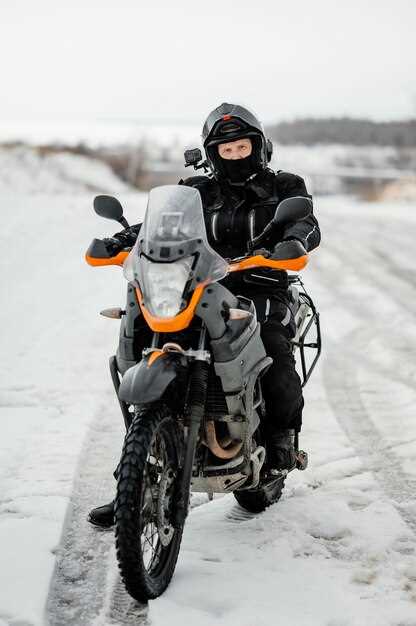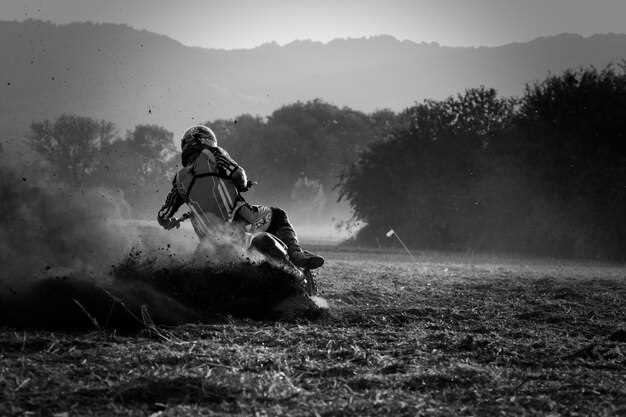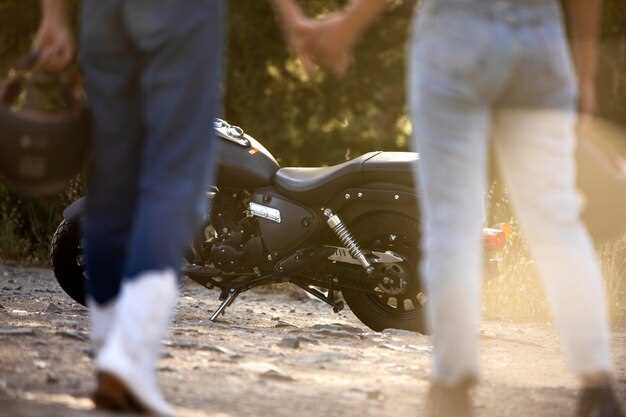
The adventure motorcycle segment has gained immense popularity among riders seeking versatility, ruggedness, and the thrill of the open road. In this article, we delve into a head-to-head performance comparison between two titans of the industry: KTM and BMW. Each brand boasts a rich heritage and a solid reputation for producing machines that cater to both on-road comfort and off-road prowess.
KTM has established itself as a leader in the adventure bike category, known for its lightweight handling and powerful engines. With models like the KTM 1290 Super Adventure leading the charge, the brand emphasizes performance, agile maneuverability, and cutting-edge technology. Riders can expect a thrilling experience, whether navigating city streets or conquering challenging terrains.
On the other hand, BMW has long been synonymous with adventure touring, particularly with its iconic R1250GS. The brand’s focus on rider comfort, advanced features, and impressive stability makes it a formidable contender in the adventure bike arena. With a reputation for durability and long-distance capability, BMW appeals to those who prioritize reliability alongside performance.
This article will explore critical aspects of both manufacturers, including engine performance, handling characteristics, and technological innovations, helping potential buyers make informed decisions in the ever-evolving landscape of adventure motorcycles.
Adventure Bike Showdown: KTM vs BMW Performance Comparison

When it comes to adventure bikes, KTM and BMW are two brands that dominate the landscape. Each manufacturer offers a unique blend of engineering, capability, and performance, making them prime candidates for comparison.
KTM is renowned for its lightweight frames and powerful engines, often providing superior off-road performance. The KTM 1290 Super Adventure R, for example, boasts a 1,301cc V-twin engine that delivers exhilarating torque, making it ideal for both rugged terrains and highway cruising. This model features a top-shelf suspension system, which offers remarkable handling and stability, allowing riders to tackle challenging obstacles with ease.
On the other hand, BMW has a legacy of comfort and technological advancement in its adventure bikes. The BMW R1250 GS is a flagship model that combines a smooth Boxer engine with advanced electronics, including traction control and multiple riding modes. This bike excels in versatility, offering riders a comfortable seat and ample wind protection, making it perfect for long-distance journeys.
In terms of weight distribution, KTM models often feel more agile, thanks to their focus on off-road capability. However, the R1250 GS offers a heavier feel, which translates to more stability on highways. Both brands have made significant strides in technology; KTM incorporates dynamic ride modes, while BMW prides itself on its innovative shift cam technology for improved performance across various RPM ranges.
When it comes to fuel capacity, KTM typically provides a larger tank, which aids in longer adventures without frequent stops. Conversely, BMW focuses on efficiency, often offering better mileage, which can be advantageous during extensive rides.
Ultimately, the choice between KTM and BMW hinges on the rider’s preferences and intended use. Whether you prioritize outright performance and agility with KTM or long-distance comfort and cutting-edge technology with BMW, both brands offer compelling options for adventure enthusiasts.
Engine Specifications and Performance Metrics of KTM and BMW
KTM and BMW are two prominent players in the adventure motorcycle market, each offering unique engine specifications and performance metrics that cater to different riding styles and preferences.
KTM adventure bikes, particularly the 1290 Super Adventure series, are equipped with a powerful 1301cc V-twin engine. This configuration produces approximately 160 horsepower and 140 Nm of torque, delivering a robust performance that excels in both off-road and on-road conditions. The engine features a ride-by-wire throttle that enhances responsiveness and provides various driving modes, allowing riders to tailor the power delivery according to their needs.
In contrast, BMW’s R1250 GS offers a boxer engine with a displacement of 1254cc. This flat-twin engine generates about 136 horsepower and 143 Nm of torque. One of the key characteristics of the BMW engine is its variable camshaft adjustment system, known as ShiftCam, which optimizes power delivery across different RPMs, ensuring a smooth and versatile ride. The R1250 GS is renowned for its balanced handling and stability, making it a favorite among adventure touring enthusiasts.
When it comes to fuel efficiency, KTM bikes tend to offer competitive mileage, typically ranging around 40-45 miles per gallon, depending on riding conditions. On the other hand, BMW models like the R1250 GS achieve approximately 50 miles per gallon, showcasing their engineering focus on efficiency without sacrificing performance.
Both manufacturers equip their bikes with advanced features such as traction control, cornering ABS, and customizable ride modes, enhancing overall safety and handling. KTM’s contribution to lightweight construction contributes to agility, especially in off-road scenarios, whereas BMW’s emphasis on comfort and stability makes their bikes suitable for long-distance touring.
In conclusion, the engine specifications and performance metrics of KTM and BMW adventure motorcycles reveal distinct strengths. KTM specializes in high-horsepower, off-road-oriented bikes, while BMW focuses on versatility and efficiency, catering to a diverse range of adventure riders.
Handling and Suspension Differences for Off-Road Capability
The handling and suspension systems of KTM and BMW adventure bikes are crucial in determining their off-road performance. Each brand employs distinct engineering philosophies tailored for different riding styles and terrain adaptability.
KTM bikes are renowned for their agile handling and responsive suspension setups. Typically equipped with longer suspension travel, KTM models like the 1290 Super Adventure are designed to absorb rough terrains, enhancing stability over challenging obstacles. The use of WP suspension technology allows riders to tackle steep descents and rocky trails with confidence. The overall lighter weight of KTM machines further contributes to their nimble handling, making quick direction changes easier for riders navigating technical sections.
In contrast, BMW bikes, such as the R1250 GS, focus on a balance between comfort and performance. The suspension system often includes advanced features like the Dynamic ESA (Electronic Suspension Adjustment), which allows riders to adjust settings on-the-fly for varying road conditions. This feature provides excellent damping performance, ensuring stability during long rides over varying terrain. However, BMW’s approach has a slightly heavier weight profile compared to KTM, which may affect agility in tight situations.
While both brands offer exceptional off-road capabilities, the choice between KTM and BMW ultimately depends on rider preference. Those seeking lightweight performance and agility may gravitate towards KTM, while riders favoring comfort on longer journeys with the flexibility of advanced suspension adjustments might prefer BMW. Understanding these handling characteristics is essential for any adventure rider aiming to tackle diverse off-road environments.
Long-Distance Riding Comfort: Seat Design and Ergonomics

When evaluating long-distance riding comfort, the seat design and ergonomics play a pivotal role in the performance comparison between KTM and BMW adventure bikes. Both manufacturers have unique approaches to seat technology, which significantly impacts rider experience over extended journeys.
- KTM Seat Design:
- KTM seats are generally designed for a sporty feel, providing a balance between comfort and performance.
- The seat padding is often firmer, offering support that is conducive to both on-road and off-road riding.
- Many KTM models feature a narrow seat profile, allowing for better leg movement and control, especially in off-road scenarios.
- Adjustable seat heights are available on certain models, enhancing the ergonomics for riders of different statures.
- BMW Seat Design:
- BMW focuses heavily on comfort, often incorporating plush padding and wider seat profiles for long-distance journeys.
- The seats typically feature contoured designs that support the natural posture of the rider, reducing fatigue during prolonged rides.
- Many BMW adventure bikes offer heated seat options, further enhancing long-distance comfort in varying weather conditions.
- Customizable seat options are available, allowing riders to tailor the fit to their individual preferences.
In terms of ergonomics, riders also need to consider handlebar position, footpeg placement, and overall riding posture in conjunction with seat design. Riders often find that:
- KTM: The riding position tends to be more aggressive, which can lead to discomfort over long rides for some users.
- BMW: The seating position is generally more upright, allowing for better weight distribution and minimizing strain on the lower back.
Ultimately, the choice between KTM and BMW may come down to personal preference in seat style and ergonomic fit. For riders prioritizing sportiness and agility, KTM may be preferable, while those seeking plush comfort on long hauls may lean toward BMW. Thoroughly testing both bike options during a demo ride can provide valuable insight into which seat design and ergonomic features feel best for you.
